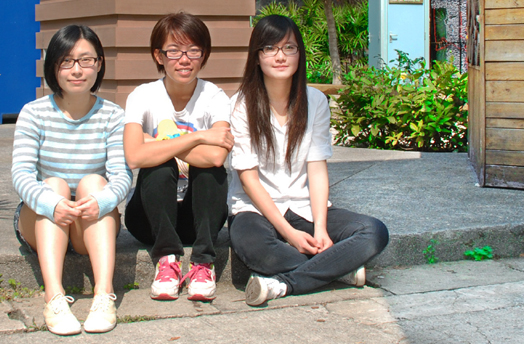
CUHK Students Reduce Waste
1. How did CU x Rubbish begin? What are your aims?
In the Art Fair last year, some friends sold used objects and invited us to discuss the University's waste problem. After that, a bunch of like-minded individuals got together and formed CU x Rubbish. Our aims are to encourage the campus community to segregate rubbish and recycle; to engage in free cycling and upcycling; and to reduce consumption or buy less. We achieve them through promotion and word of mouth. We want to show city-dwellers that there are many possibilities in life and that we should cherish our resources.
2. Can you tell us about the Waste Charging Reward Scheme?
We launched the scheme in February this year, in Yat Sen Hall of Shaw College, CUHK. It's divided into periods of two weeks each, followed by a third week of evaluation and promotion. According to our current plan, the programme will end this academic year. Depending on student response, we may extend it to other floors. Before the programme, our members had already been weighing waste at the hostel for a month, and, based on the data, had set the targets for garbage volume and recycle volume for the first period.
3. How do you operate?
Every afternoon from Monday to Friday, members of CU x Rubbish would go to Yat Sin Hall to weigh waste and check if our targets are met. The scheme operates on a system of collective responsibility. If the target is met, every student on the whole floor will receive a $10 Shaw canteen voucher. We chose Yat Sin Hall because they have good complementary facilities such as food decomposer and enough recycle bins.

4. What gave you the idea for the Waste Charging Reward Scheme?
We hope students will reduce the amount of rubbish they generate. We also want to support the government's proposal of municipal waste charging, hence the name of the scheme. Just for the record, we do not charge students for having too much rubbish; we reward them for having less.

5. What are the challenges to implementation?
Charging and rewarding are two very different concepts. The latter is not as effective a deterrent. Communicating and collaborating with hostel students also takes time.
6. What else do you do besides organizing talks and running the Waste Charging Reward Scheme?
We also do free cycling—giving away unwanted items to others instead of discarding them. We have a virtual venue on Facebook called 'CU 拎' for people to post pictures of usable objects they no longer want, and a real-life venue—the University has allowed us to make use of one of the huts in the Yard for Environmental Sustainability (YES) on campus—to serve as a temporary storage area for items to be exchanged. Our free cycling group has a membership of over a thousand, consisting mostly of CUHK people and some outsiders. Anyone can go to our hut—it's light blue in colour—in YES and put their unwanted but usable things there, or they can take away objects they find useful.
Besides, we are working on recycling resources left by students upon checking out. People throw away a lot of stuff at the end of the academic year, then in September, we see students going to Ikea to buy more things. This is especially pertinent with exchange students who are only here for a limited period of time. By linking up the need for disposal of items at end of academic year and the demand for the useful items at start of the subsequent academic year as well as working with NGOs in collecting the usable items, we hope that our action can greatly reduce the unnecessary wastage upon hostel retreat.


